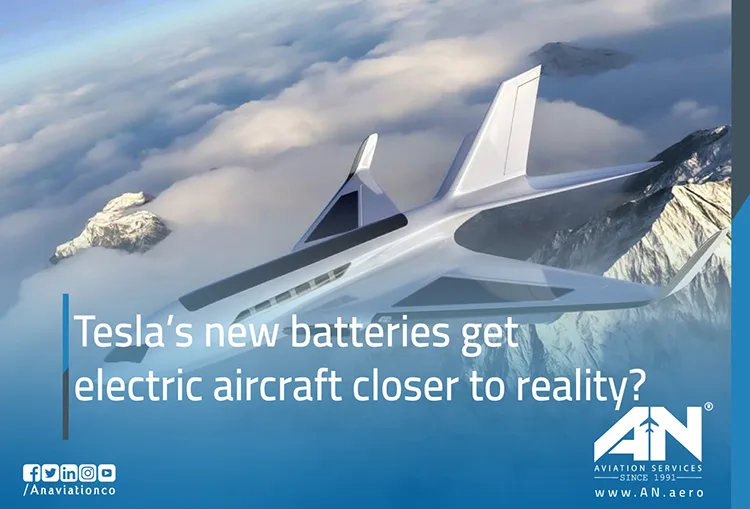
The idea of fully electric aircraft is no longer a far-fetched dream. With advancements in battery technology, the aviation industry is gradually edging closer to a revolution that could make electric-powered flight a viable reality. Among the frontrunners in the battery race is Tesla, whose new 4680 batteries have sparked excitement for their potential to transform not just electric vehicles but also aviation. Could these innovative batteries help make electric aircraft the future of air travel?
Let’s explore how Tesla plans to introduce cutting-edge energy solutions, the significance of the 4680 batteries, and why this breakthrough might be the key to unlocking the future of sustainable flight.
What Makes Tesla’s 4680 Batteries Special?
Tesla’s 4680 batteries represent a significant leap in energy storage technology. These cylindrical battery cells, named after their dimensions (46mm by 80mm), are designed to deliver more power, higher energy density, and increased efficiency compared to Tesla’s previous battery models. They boast features like a dry cathode and improved thermal management, allowing them to hold more charge and reduce heat buildup during use.
The dry cathode process, in particular, is revolutionary because it simplifies production, reduces costs, and minimizes environmental impact compared to traditional methods. For electric aircraft, these improvements are critical. Aircraft require batteries with high energy density to deliver sufficient power for takeoff, sustained flight, and landing, while also being lightweight enough to avoid compromising performance.
In test production, these batteries have already demonstrated a 54% increase in range and a fivefold improvement in energy storage capacity. For industries like aviation, these advancements could prove transformative.
Electric Aircraft: Challenges and Opportunities
The aviation industry has long grappled with the challenge of creating viable electric aircraft. Traditional battery packs have always been too heavy, limiting the range and payload capacity of electric planes. For commercial aviation to adopt electric propulsion, batteries need to provide the necessary power while being lightweight and compact.
Tesla’s 4680 cell technology could address many of these issues. Its higher energy density could make it possible for electric planes to travel longer distances, while its compact design could reduce the weight burden on aircraft. Additionally, the batteries’ faster charging capabilities and extended lifespan make them an attractive option for both test production and full-scale commercial deployment.
Tesla’s Vision: From Cars to Skies
Although Tesla is best known for its success in the electric vehicles market, the company has hinted at broader ambitions. Elon Musk, Tesla’s CEO, has previously discussed the potential of electric aviation, emphasizing the need for high-energy-density batteries to make the concept feasible. The company’s 4680 batteries bring Tesla one step closer to realizing this vision.
The key to Tesla’s success has always been its ability to integrate innovation with scalability. If the company can adapt its battery technology to meet the specific demands of aviation, it could play a leading role in the electrification of air travel. This transition would not only revolutionize the aviation industry but also significantly reduce carbon emissions, contributing to a more sustainable future.
The Implications for the Aviation Industry
The adoption of Tesla’s new batteries in aviation could usher in a new era of electric aircraft. Airlines and manufacturers are under increasing pressure to reduce emissions and meet sustainability goals, and battery-powered planes present a compelling solution. Here’s why:
- Reduced Emissions: Electric aircraft powered by advanced battery packs would eliminate the need for fossil fuels, drastically cutting greenhouse gas emissions.
- Lower Operating Costs: With fewer moving parts and reduced reliance on costly aviation fuels, electric planes could significantly lower maintenance and operational expenses.
- Noise Reduction: Electric propulsion systems are quieter than traditional jet engines, improving the overall passenger experience and reducing noise pollution near airports.
However, the industry must also address several hurdles, such as infrastructure for charging electric aircraft, regulatory approval, and the ability to scale production of advanced batteries like the 4680 cells.
How Close Are We to Electric Aviation?
While Tesla’s 4680 batteries represent a major step forward, the widespread adoption of electric aviation is still a few years away. Current test production of electric planes has shown promise, particularly for short-haul flights and smaller passenger aircraft. For example, startups like Eviation and Heart Aerospace are already developing battery-powered planes designed for regional travel.
However, for larger commercial aircraft, there is still progress to be made in improving energy density and reducing battery weight. Innovations like Tesla’s dry cathode technology and the scalability of the 4680 cell could help bridge this gap.
The Broader Impact of Tesla’s Batteries
The potential applications of Tesla’s new batteries extend beyond aviation. In addition to powering electric vehicles, the 4680 batteries could revolutionize industries such as renewable energy, where efficient energy storage is crucial. By enabling longer flight times and reducing environmental impact, these batteries could pave the way for a cleaner, greener future.
Conclusion
Tesla’s 4680 batteries are a game-changer, not just for the electric vehicles market but also for industries like aviation. Their high energy density, compact design, and efficiency improvements make them a promising solution for the challenges facing electric aircraft. While the transition to battery-powered aviation will require continued innovation and investment, Tesla’s groundbreaking technology brings us closer to a future where electric planes are not just a possibility, but a reality.
As the aviation industry strives to meet sustainability goals and reduce its environmental footprint, Tesla’s advancements in battery technology offer a glimpse of what’s possible. From reducing emissions to lowering operational costs, the potential benefits of electric aviation are too significant to ignore.

